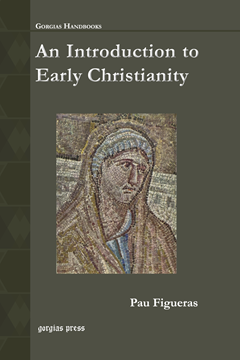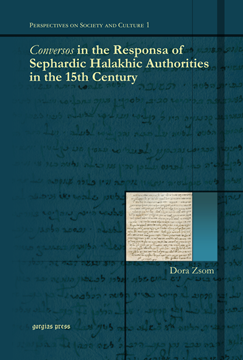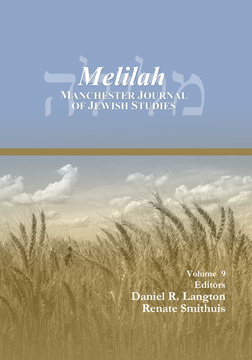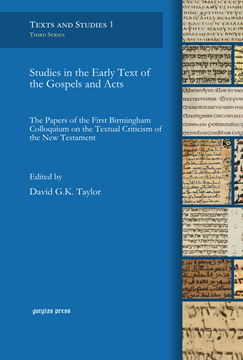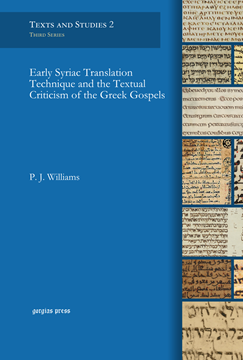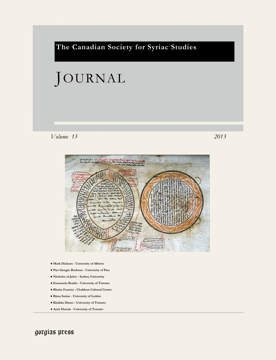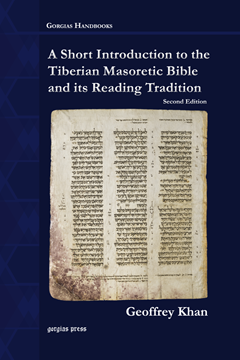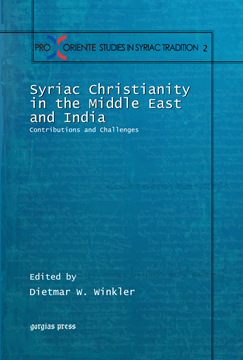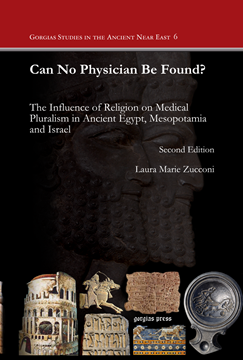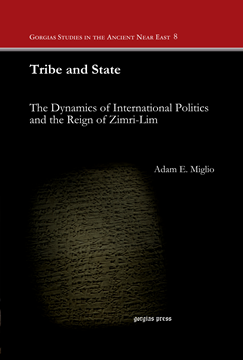An Introduction to Early Christianity
By Pau Figueras
Series: Gorgias Handbooks 32
ISBN: 978-1-4632-0238-5
A general introduction to the origin and development of Christianity, from its Jewish background in the land of Israel up to its contribution to the thought and art of medieval Europe.
$84.00 (USD) $50.40 (USD)
Conversos in the Responsa of Sephardic Halakhic Authorities in the 15th Century
By Dora Zsom
Series: Perspectives on Society and Culture 1
ISBN: 978-1-4632-0239-2
This volume presents a systematic and detailed elaboration of the halakhic (legal) decisions written by five of the most important authors who wrote responsa concerning conversos between the years 1391 and 1492. The expulsion was an event that radically changed the perspectives of the Iberian conversos. The halakhic authorities were confronted with an absolutely new situation, in which they had to reformulate their position towards the conversos. This volume presents all the responsa written in connection with conversos by Isaac b. Sheshet Perfet, Simeon b. Ṣemaḥ Duran and his descendants: Solomon b. Simeon Duran, Ṣemaḥ b. Solomon Duran and Simeon b. Solomon Duran.
$148.00 (USD) $88.80 (USD)
Manchester Journal of Jewish Studies (2012)
Editors Daniel R. Langton & Renate Smithuis
ISBN: 978-1-4632-0240-8
Melilah is an interdisciplinary electronic journal concerned with Jewish law, history, literature, religion, culture and thought in the ancient, medieval and modern eras.
$59.00 (USD) $35.40 (USD)
Studies in the Early Text of the Gospels and Acts
The Papers of the First Birmingham Colloquium on the Textual Criticism of the New Testament
Edited by David G.K. Taylor
Series: Texts and Studies (Third Series) 1
ISBN: 978-1-4632-0242-2
Eleven papers from the First Birmingham Colloquium on the Textual Criticism of the New Testament, examining aspects of the Textus Receptus, the ‘Pre-Johannine Text’ of the Gospel, the ratings system in the United Bible Societies’ Greek New Testament and the application of probability theory to textual transmission, as well as surveys of non-continuous papyrus witnesses to the New Testament and the Dura-Europos Gospel Harmony, alongside studies of variation in the form of the Beatitudes and the location of Emmaus.
$157.00 (USD) $94.20 (USD)
Early Syriac Translation Technique and the Textual Criticism of the Greek Gospels
Series: Texts and Studies (Third Series) 2
ISBN: 978-1-59333-096-5
Although scholars have often made inferences about the Greek texts that lay behind the Old Syriac and Peshitta versions of the Gospels, very few have ever attempted to formulate systematic rules for such inferences. This volume investigates a wide range of textual phenomena and formulates clear and simple rules for the use of Syriac texts as witnesses to the underlying Greek. It becomes possible to uncover errors that have accumulated during the evolution of the Greek New Testament textual apparatus. Williams argues these errors generally stem from the unjustified use of Syriac witnesses.
$170.00 (USD) $102.00 (USD)
Journal of the Canadian Society for Syriac Studies 13
Edited by Amir Harrak
ISBN: 978-1-4632-0244-6
Volume 13 includes articles by Mark Dickens, Pier Giorgio Borbone, Nicholas Al-Jeloo, Emanuela Braida, Khairy Foumia, Rima Smine, Khalid Dinno and Amir Harrak.
$75.00 (USD) $45.00 (USD)
A Short Introduction to the Tiberian Masoretic Bible and its Reading Tradition
Series: Gorgias Handbooks 28
ISBN: 978-1-4632-0246-0
This book is intended to provide a quick introductory overview of the Tiberian Masoretic tradition of the Hebrew Bible and its background. It was this tradition that produced the great Masoretic codices of the Middle Ages, which form the basis of modern printed editions of the Hebrew Bible. Particular prominence is given to the multi-layered nature of the Masoretic tradition. The volume contains a section describing the Tiberian reading tradition, which is essential for a correct understanding of the vocalization system.
$47.00 (USD) $28.20 (USD)
Syriac Christianity in the Middle East and India
Contributions and Challenges
Edited by Dietmar W. Winkler
ISBN: 978-1-4632-0247-7
This volume acknowledges the contributions of Syriac Christians in the fields of culture, education and civil society throughout the history in the Middle East and India, and examines the challenges of living and professing the Christian faith as a minority in a multi-religious and pluralistic society, giving special attention to religious freedom and personal status.
$165.00 (USD) $99.00 (USD)
Can No Physician Be Found?
The Influence of Religion on Medical Pluralism in Ancient Egypt, Mesopotamia and Israel
Series: Gorgias Studies in the Ancient Near East 6
ISBN: 978-1-4632-0248-4
Can No Physician be Found analyzes how religion, as an expression of a universal order, is applied to the medical practices in the cultures of ancient Egypt, Mesopotamia and Israel. The comparative approach sheds light on how religious concepts shaped not only the particular medical identity of each society, but also how they can simultaneously participate in a broader medical culture spanning the ancient Near East.
$126.00 (USD) $75.60 (USD)
Tribe and State
The Dynamics of International Politics and the Reign of Zimri-Lim
Series: Gorgias Studies in the Ancient Near East 8
ISBN: 978-1-4632-0249-1
This book analyzes Zimri-Lim’s interactions with sovereigns from the Habur and with Yamut-bal and Numha tribal polities. It describes how Zimri-Lim’s disproportionate dependence on tribal connections left him vulnerable when these alliances began to falter in his tenth regnal year.
$154.00 (USD) $92.40 (USD)
